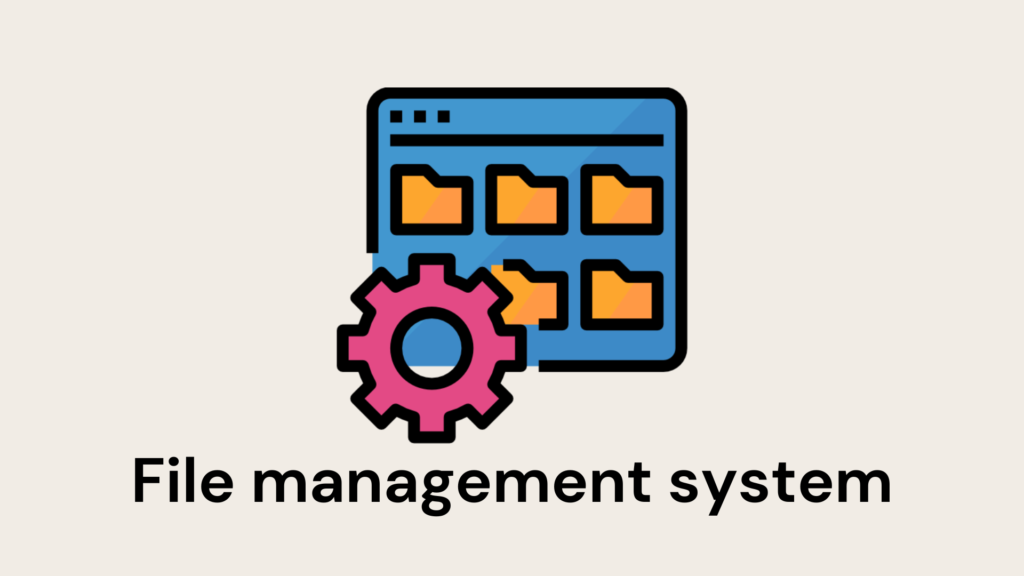Are you tired of constantly searching for files on your computer? Do you struggle to keep track of all your documents and find yourself wasting precious time organizing them? Then it’s time to learn about file management in operating systems. As someone who has experienced the frustrations of a disorganized digital world, I understand the struggle. But fear not, because in this article, we’ll cover everything you need to know about file management in operating systems. From basic concepts to advanced techniques, we’ve got you covered. So let’s dive into the world of efficient and organized file management together!
So, file management by operating system?
File management is a crucial aspect of any operating system, as it is responsible for organizing and storing all the data and files on a computer. It allows users to access, modify, and delete their files efficiently.
One of the main functions of file management is to create a hierarchical structure for storing files. This means that files are organized into folders or directories, which can then be further divided into subfolders. This makes it easier for users to find specific files and keep them organized.
In addition to organizing files, file management also includes features such as creating new files, copying and moving existing ones, renaming them, and deleting unwanted ones. These actions can be performed through both graphical user interfaces (GUI) or command-line interfaces (CLI), depending on the user’s preference.
Another important aspect of file management is maintaining the integrity and security of the stored data. This includes backing up important files regularly to prevent loss in case of hardware failure or accidental deletion.
With advancements in technology, modern operating systems have also introduced cloud storage options where users can store their files remotely on servers accessed over the internet. This not only helps with backup but also facilitates easy sharing of large documents with others.
Overall, effective file management ensures that computer systems run smoothly by keeping track of all data stored on them. It plays an essential role in increasing productivity and efficiency while using an operating system.
Understanding the Role of File Management in an Operating System
File management is a crucial part of any operating system, acting like a well-organized library for your computer’s data. Just imagine walking into a library where every book is in its right spot, making it easy to find what you need. Similarly, file management allows users to create, store, and retrieve files efficiently. The operating system keeps everything neatly categorized through folders and directories. This organization not only helps in locating documents quickly but also protects the data from getting lost or corrupted.
Moreover, good file management ensures that multiple users can share resources without stepping on each other’s toes. For instance, access permissions can be set so that certain files are private or shared with specific people only. This adds an extra layer of security and control over sensitive information. When we consider backups and recovery options provided by an operating system’s file management tools—like automatic saving or version history—we realize just how essential these features are for preserving our work.
In essence, effective file management isn’t just about storing files; it’s about creating a seamless experience where everything works harmoniously together for both personal productivity and collaboration among users.
Key Components and Functions of File Management Systems in an Operating System
File management systems play a crucial role in the smooth functioning of an operating system, acting like the librarian of a vast digital library. They help organize and maintain files, ensuring that users can easily locate and access their documents when needed. One key component is the file directory, which serves as a roadmap for all files stored on a device. It allows users to navigate through folders, making it simple to find specific items without unnecessary hassle. Moreover, file attributes such as size, creation date, and type provide essential information about each file, aiding users in managing their data more effectively.
Another important function of these systems is handling permissions and security features that protect sensitive information from unauthorized access. By setting permissions at various levels—whether for individual files or entire directories—the system ensures that only authorized users can modify or view certain data. Additionally, functions like file compression reduce storage space by condensing large files into smaller ones while retaining their contents intact for easier sharing and faster transfers across networks. Overall, these elements work together harmoniously within an operating system to create an efficient environment where data management feels effortless yet secure.
Through this intricate design, the user experience becomes seamless as they interact with their digital landscape.

Read also: download android operating system
File Operations in an Operating System: An Examination of Creating, Reading, Updating, and Deleting Files
In an operating system, file operations form the backbone of how we interact with data. When you create a file, you’re essentially making a new space to store information. This process is often as simple as clicking “Save” in a word processor or using commands in a programming environment. Behind the scenes, the operating system allocates space on your storage device and assigns unique identifiers to ensure that your file can be easily accessed later. Once created, files can be viewed or altered through reading and updating processes. Reading involves retrieving data from the stored location without changing it; think of it like opening a book just to read its contents.
Updating files allows us to make changes—whether that’s correcting errors, adding new information, or adjusting formatting—as we see fit. This operation provides flexibility and keeps our documents relevant over time. Finally, when something is no longer needed, deleting becomes essential; this removes unnecessary clutter from our systems. Deleting doesn’t just erase visibility; it frees up storage for future creations! Overall, these fundamental operations—creating, reading, updating, and deleting—are crucial for efficient data management within any operating system’s framework.
Whether it’s organizing photos or coding software applications, mastering these functions enhances our digital productivity.
The Importance of Proper File Organization within an Operating System
Having a well-organized file system can make all the difference in how smoothly your computer runs. Imagine opening your laptop and finding everything right where you expect it to be. Folders, for instance, act like labeled drawers, helping you find documents, photos, and music without hunting through endless lists. This organization not only saves time but also reduces frustration. When files are categorized properly—perhaps by year or project—it becomes much easier to locate what you need quickly.
Moreover, proper file organization within an operating system ensures that important data is safe from accidental deletion or misplacement. You can create specific folders for different subjects or areas of interest, which makes backing up data a breeze as well!
- Important Documents
- Work Projects
- Personal Photos
- School Assignments
This way, when it’s time to back things up or share them with others, you’ll know precisely where everything is stored. In essence, thoughtful organization transforms chaos into clarity and turns tedious tasks into simple actions that anyone can manage efficiently.
You may also like: automatic speech recognition model
Advanced Concepts in OS File Management: Security and Access Control Measures
In today’s digital world, protecting our files is essential. Operating systems use various security measures to keep our data safe from prying eyes and potential threats. One key aspect of this protection is **access control**, which determines who can view or modify files. Imagine it like having a special key for your diary; only those with the right key can open it. Access control lists (ACLs) allow system administrators to define specific permissions for each user or group, ensuring that sensitive information stays private—like locking away an important secret.
Moreover, operating systems often employ encryption as an additional layer of security, scrambling the content of files so they remain unreadable without the correct decryption key. This process protects data even if someone gains unauthorized access to your device. Various types of encryption methods exist, such as symmetric and asymmetric encryption; these techniques help safeguard everything from personal documents to financial records. Additionally, regular audits and monitoring can alert users about suspicious activities related to file access, much like having a watchdog keeping watch over your precious belongings.
By combining these strategies—access controls, encryption, and monitoring—operating systems create robust environments where users feel secure in their digital lives while navigating the vast online landscape.



